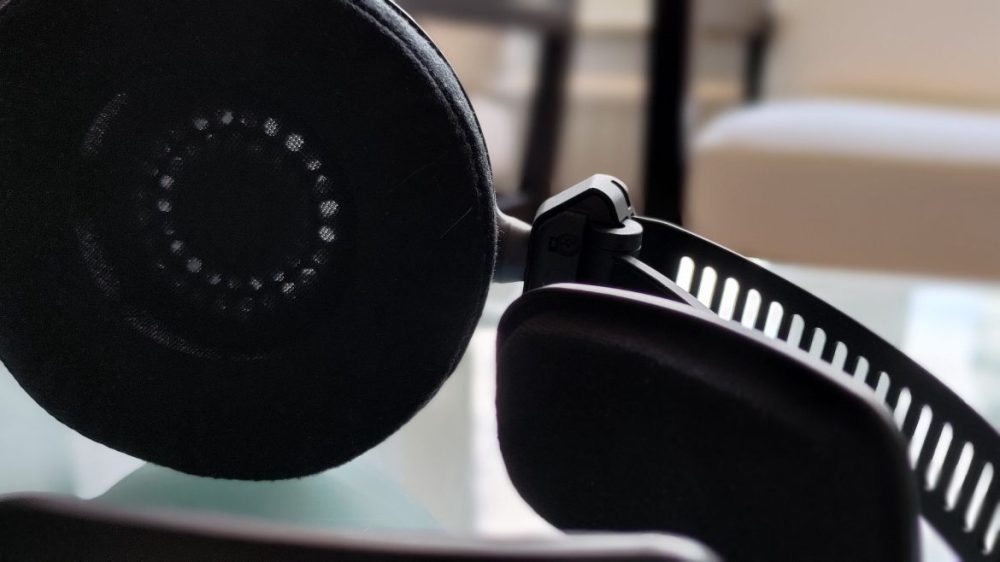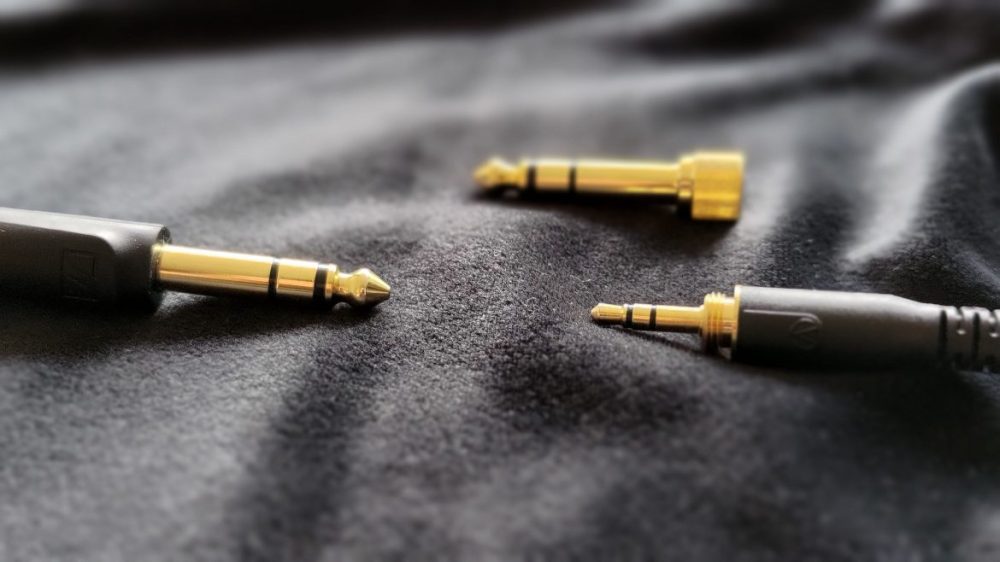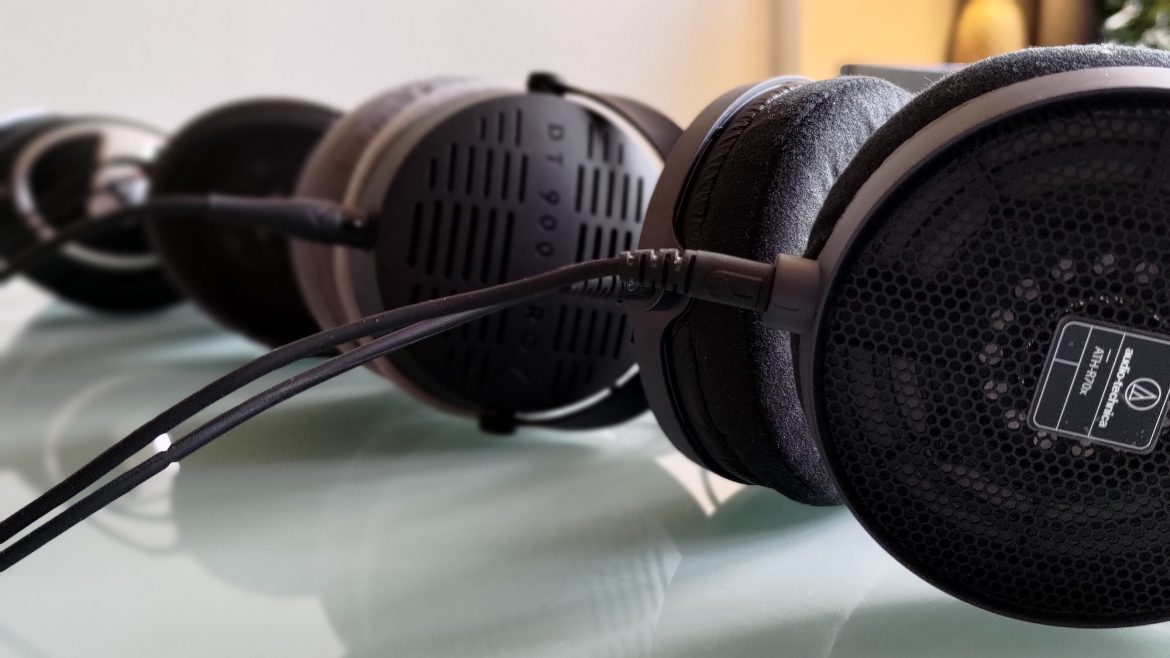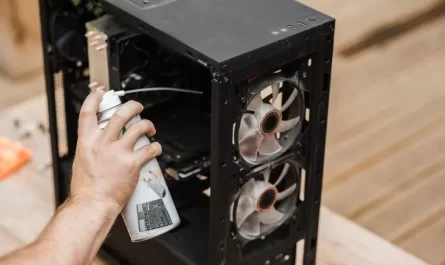There are two given aspects with open headphones that should be mentioned. First up: they let in ambient sound and the surroundings can also take part in what is being played. They are therefore not suitable for environments with high background noise, nor in more social contexts. When the obvious is out of the way, we can get into the interesting stuff.
In general, the special thing about open headphones is that air is allowed to move away from the ear and with this air the sound waves follow. The effect of this is that the endurance of the ear increases because resonance and the unplanned confluence of different base frequencies have somewhere to go. In normal, soundproof over-ear headphones, you do get sound insulation from the environment, but all sound waves created in the headphones are pushed into the ear or bounce around in the housing. Furthermore, the open shell means that the headphones can be seen as small, perfectly balanced and acoustically treated rooms. The sound that reaches the ears is considered more natural and clear precisely because all the sound waves are not forced into the ears. Other effects are that the soundstage is given space to become deeper and have more space.
In the context of mixing and music production, it is common to use open headphones precisely because of these characteristics. The endurance, as previously mentioned, increases as the ears can handle low frequencies significantly longer and the ventilation around the ears contributes to increased comfort. The clear sound image is also desirable, as what you hear is often the way it sounds, that is, the way it is meant to sound. Granted, we as listeners have not been part of the recording and of course cannot know exactly what the artist’s intentions really were. However, we can – to the greatest extent possible – reproduce the recorded material neutrally, without distorting or amplifying anything.

A challenge for open headphones is potential loss of bass and reduction in pressure. Closed headphones have a definite edge here, precisely because of the concentrated sound wave that reaches the ear. But in return, you get, in a production context, a little better control of how it all can sound in a pair of speakers.
It’s common for these types of headphones to be cord powered and as soon as it goes analog, cord quality and insulation can play a bigger role. A digital signal is correct or clearly distorted, but nothing in between. Analog signals can be disturbed to a greater or lesser extent by surrounding electric fields.
The cord opens up the analog
Initially, one should be aware that as soon as one enters the analog world, which we do when cables are involved, there is a bit more to take into account and the key words in these contexts are “balance in the system”. We will return to that. Furthermore, you are often met with the option of a 6.3mm male, as opposed to the more common 3.5mm male. Just to get it said, there is no difference between them purely in terms of sound quality. 3.5mm is mainly a result of the arrival of portable, smaller audio sources such as a Walkman. So why is the 6.3mm male still there?
The two simplest answers are that it is used for more than headphones and that it can withstand a significantly higher degree of wear and tear than its little brother. But to develop the answer when it comes to headphones, there are additional aspects that come into play for the 6.3mm male.
To get to the bottom of this, we mix in the concept of impedance . Impedance can be loosely expressed as “resistance”, that’s a simplification and not the whole truth but close enough. Some headphones have a low impedance, let’s say up to about 80 ohms. The next level moves roughly up to 250 ohms anything above that is considered high impedance. In order to send a stronger signal, more space is required, and if there is more space, it is advisable to use something more durable, such as a 6.3mm male. The size makes it unsuitable for smaller devices, but for headphone amplifiers, a DAC or an external sound card it is excellent.

Is high impedance better?
To answer that question, we should explain what impedance comes from. The membrane that sits in the earphone is wound with a wire that delivers an electrical signal that causes the membrane to swing back and forth. If the wire is tightly wound, a stronger signal is required and vice versa. If a low signal is enough, the impedance is low and vice versa of course. This is where the difference comes in. A high-impedance handset can usually move in more detail , but then also requires more power (power) to reach its full potential.
The last, complicating, factor then becomes the sending unit; it too has an impedance in terms of ability to send the signal. Your mobile device will likely have no problem driving the lower tier of headphones. If you go up a level, you will notice that you need to increase the volume. It will probably work, but the transmitting device will have to struggle, which will affect the battery life, for example.
Finally, your transmitting unit must not be too strong for a pair of low-impedance headphones, as there is a risk that you will burn them. At the same time, your transmitting unit must not be too weak for a pair of high-impedance headphones, the risk is that they will not be moved around enough to be able to deliver the sound they should. There of the expression “Balance in the system”. It is therefore also not obvious to say that “a headphone with low impedance is worse” or “a headphone with high impedance is better”. Often that attribute is something you can choose as needed. Beyerdynamic has, for example, taken notice of this with the DT 770; where one model lets you choose with 32, 250 and 600 ohm impedance.
There is much to add on this topic and for the curious there is much to dive into to further add parameters to this both interesting and complicated area. You hopefully now have at least a basic idea and picture of the trade-offs that need to be made, but also how you can best tackle them.



